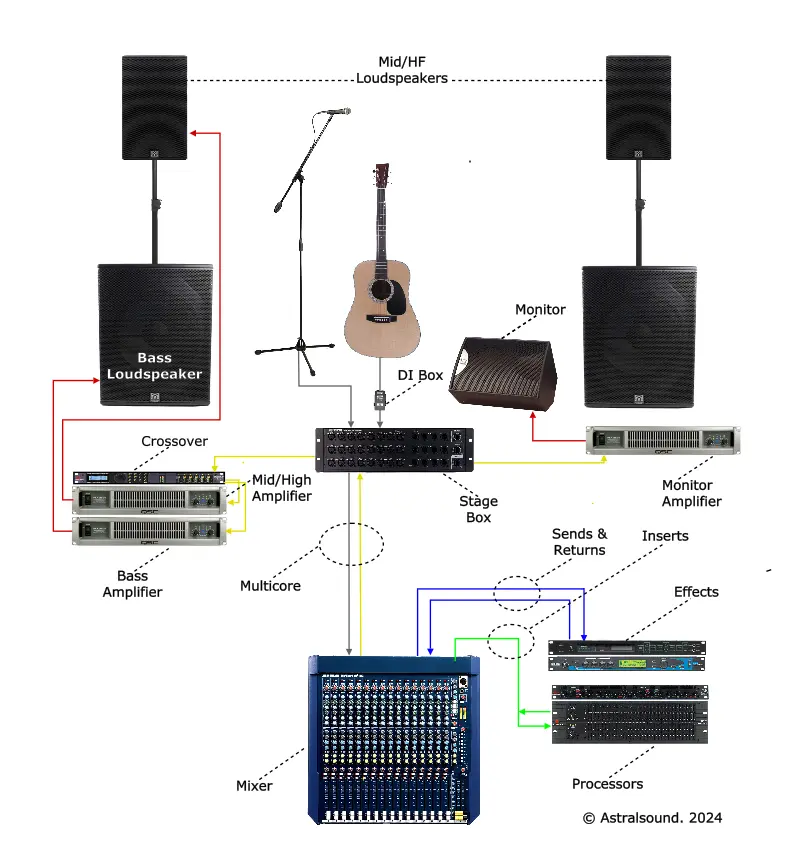PA Schematic
PA System Schematic Diagram
All PA Systems - from the smallest to the largest - follow the same basic format. The illustration below shows how the principal components common to most PA systems connect to each other. The arrows show the direction of signal flow.
Low-level signals from instrument pickups and microphones are routed to the mixer's channel inputs via the multicore (grey). At the mixer's inputs, the signals are amplified to line-level by the mixer's preamplifiers. Before they are mixed together, the line-level signals may be routed to off-board processors (green). They may also have effects added (blue). The mixer's outputs return one or more mixes (yellow) - still at line level - to the crossover and monitor amplifiers. Sometimes return signals use a separate multicore, but more commonly the same multicore is used to pass signals in both directions. The crossover divides the signal into frequency bands, and each band feeds a separate output to a dedicated amplifier. Each amplifier's outputs feed high-power copies of its input signal to one or more speakers (in the illustration, connection to the right hand speakers has been omitted).
Smaller PA systems may manage without a multicore, and some budget mixers include onboard effects. Also, smaller systems may not use active crossovers (and some systems do not have monitors).
Digital mixers in systems of any size will usually incorporate all the functions (effects and processors) historically assigned to offboard equipment, and will probably also use a digital (etherCON/CAT-5e) multicore.
Larger PA systems generally differ only in quantity (see this example stage and auditorium layout for an idea of some principal differences). On the input and processing side there may be more channels (with more controls) on the mixer, a bigger multicore, and more effects and processors. In the largest productions the stage box will have more than one multicore connector, so that a separate multicore and mixer can be used for monitors. On larger stages there may also be separate smaller multicores (8-channel multicores are common) feeding groups of signals across stage. On the output side the crossover may have more frequency bands, feeding more power amplifiers which in turn feed speakers with more drive units. There may even be ‘delay stacks’: speakers fed by a delayed signal, positioned at some distance from the stage. Again, in the largest productions the monitors will often also use active crossovers. However, the basic layout will still follow the same format.
